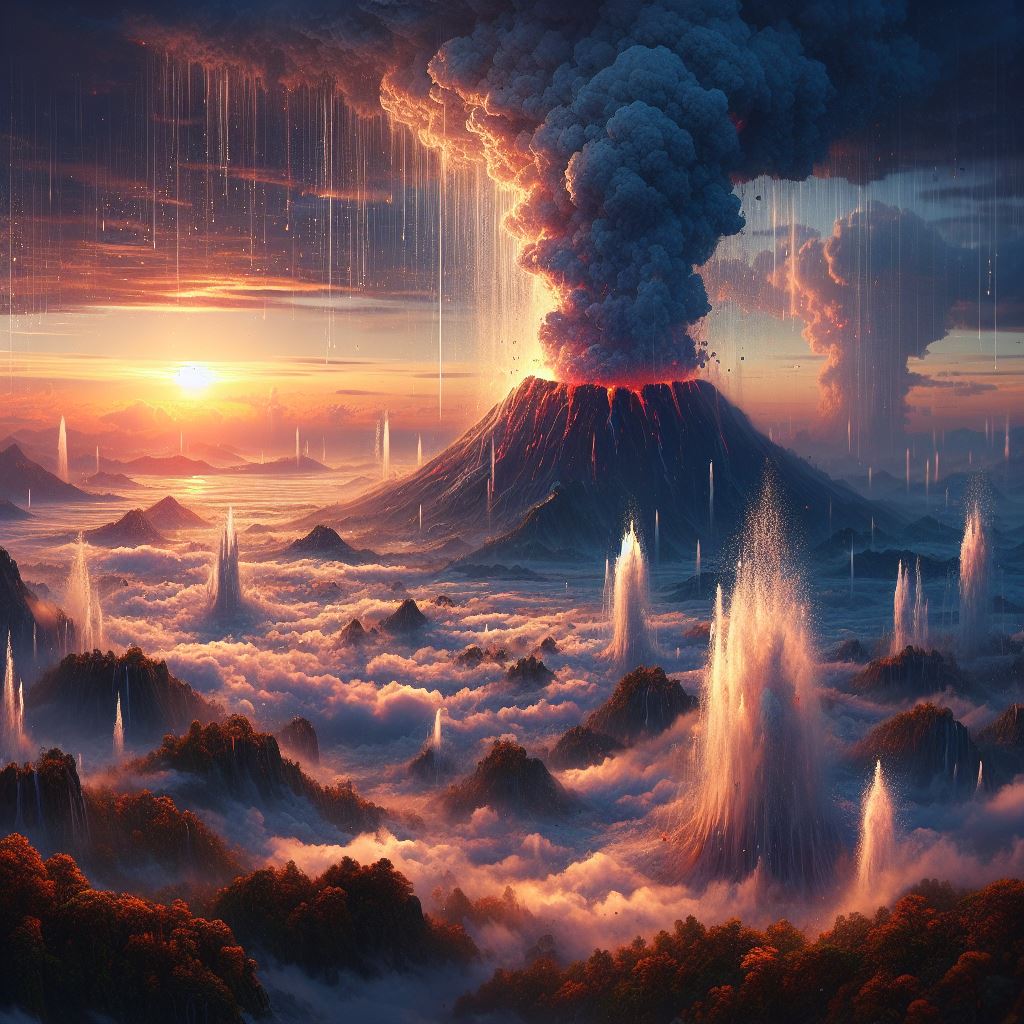Water is essential for all known forms of life, yet its origins on our planet have been a source of much debate in the scientific community. As a scientist, I set out to understand how water first formed on Earth billions of years ago. What I discovered was a complex, multilayered story with implications for how we see our planet’s early history and evolution.
The Quest for Earth’s Primitive Oceans
When Earth first formed over 4.5 billion years ago from a cloud of cosmic dust and gases, it was a hot, dry place free of water or air. Nonetheless, oceans had formed on its surface in less than a billion years. Where did this water come from?
For many years, the prevailing assumption was that icy comets and asteroids delivered it after the planet was formed. However, research by geologists and planetary scientists began to expose flaws in the "late veneer" theory. New paradigms emerged, implying that water was present on Earth almost from the beginning. Check out the theories below.
Comets and Asteroids: Seeding the Late Veneer
The popular belief is that the Earth's oceans were formed primarily from water provided by numerous bombardment impacts. The "late veneer hypothesis" contends that most of Earth's water, as well as other volatile compounds, arrived billions of years after the planet had taken shape.

In particular, asteroids rich in water ice and even massive comets could have periodically slammed into our world following its initial accretion until around 3.8 billion years ago. The arrival of these watery impactors slowly accumulated over time, filling impact craters, depressions, and other landforms with liquid to eventually spawn the first oceans.
Matching deuterium-to-hydrogen isotope ratios between some carbonaceous asteroids in our solar system and the chemistry of groundwater seawater on Earth provide evidence for this. These "isotopic fingerprints" indicate that the asteroids are geologically similar to some of the water on our planet.
However, measurements from other space missions have found many asteroids and comets to possess divergent hydrogen and deuterium ratios from our oceans, casting doubt.
Another challenge has been estimating whether the sheer volume of water so far discovered in these objects could reasonably fill large basins and sufficiently cover our world's surface to the depths observed. Current models suggest the total potential water deposited this way would fall far short.
Nonetheless, this bombardment is likely to have made a smaller contribution. The analysis of noble gases in deep mantle plumes revealed cometary elements. Furthermore, gravitational evidence suggests that at least 5% of Earth's total water by volume was delivered from the outer solar system. As a result, even though late bombardment has most likely been overestimated, it remains potentially significant piece of the origins puzzle.
The Greenhouse Rain Cycles
According to the "early atmosphere" theory, Earth's oceans formed much earlier from water vapour condensing out of a dense primary atmosphere and raining onto the surface over millions of years to form the first seas.
In recent years, advanced climate simulations testing atmospheric effects under extreme conditions shortly after planetary formation have strengthened this model.
The outcome is both exotic and revealing. According to models, around 4.4 billion years ago, as gases emitted by volcanoes were trapped by gravity, an atmosphere rich in greenhouse gases such as water vapour, carbon dioxide, methane, and ammonia began to accumulate.
Temperatures reached 230 degrees Celsius, with surface pressures many times higher than the current atmosphere. Despite the extreme heat, this would have allowed surface water to accumulate and prevented it from evaporating.

While the lower atmosphere remained hot, the upper atmosphere further out would have cooled to -100 C or less. Water vapour began to condensate here, forming raindroplets that fell in a continuous rain for millions of years, filling the boiling seas below. This hydrologic cycle allowed oceans to grow over time. Supporting evidence comes from liquid water trace minerals buried in Greenland that are approximately 4.3 billion years old.
Advocates of the "steamy skies" scenario argue that it easily provides the required volume of water while avoiding the need for rare external events. However, it is still unclear whether atmospheric composition models can fully reproduce known geochemical conditions. While unlikely to be the sole cause, condensing humidity under an ancient runway greenhouse effect most likely played a significant role.
3. Icy Planetesimals: Proto-Planetary Legacy
It's also possible that Earth's vast oceans formed primarily from icy dust particles floating in the primordial nebula cloud that surrounded our young Sun before the planets formed.
When this cosmic dust and debris entered Earth's gravitational pull over 4.5 billion years ago, Earth effectively acted as a giant "vacuum cleaner." According to models, as the planet approached 60% of its final size, between one-third and one-half of all solid icy material falling into its vicinity would be assimilated as building blocks, with gases like hydrogen also drawn in.
Thus, as the planet took shape, key ingredients vital for supplying enormous volumes of water were incorporated from amassing vast numbers of frozen comet-like miniature objects in the stellar nursery cloud. These contained abundant ice from compounds like water, methane, and ammonia hybridised with dust grains under the cold temperatures of space. Calculations for how much primordial ice mass the forming Earth could acquire point to potential surface coverage consistent with modern ocean depths
.
The relative abundances of isotopes between rare atmospheric noble gases, lunar samples, and the modern mantle-fitting accretion of nebular ices rather than later meteors provide additional support. Some comet measurements show high hydrogen levels that are almost identical to seawater. If Earth's oceans formed primarily from tiny icy pre-solar system dust, similar mechanisms are likely to have operated for other worlds, increasing the chances of abundant water and life across exoplanetary systems.
Conclusion
As I reflect on this journey through scientific theories and evidence surrounding the origins of the Earth's oceans, I'm struck by how far we've come in just my career. Significant questions remain, however, it appears that the primordial water mixture on our planet came from a combination of all channels.
Still, much work remains to be done to uncover Earth's own oceanic roots.
Based on our current scientific evidence, what are your thoughts and reactions to these theories? Please let me know in the comments.
References:
Zahnle, K., Schaefer, L., & Fegley, B. (2010). Earth's Earliest Atmospheres. Cold Spring Harbor Perspectives in Biology, 2(10), a004895.
Elkins-Tanton, L. T. (2008). Linked magma ocean solidification and atmospheric growth for Earth and Mars. Earth and Planetary Science Letters, 271(1-4), 181-191.
Sleep, N. H. (2010). The Hadean-Archaean Environment. Cold Spring Harbor Perspectives in Biology, 2(6), a002527.
Schulze-Makuch, D., & Irwin, L. N. (2006). The prospect of alien life in exotic forms on other worlds. Naturwissenschaften, 93(4), 155-172.
Zahnle, K., Arndt, N., Cockell, C., Halliday, A., Nisbet, E., Selsis, F., & Sleep, N. H. (2007). Emergence of a habitable planet. Space Science Reviews, 129(1), 35-78.